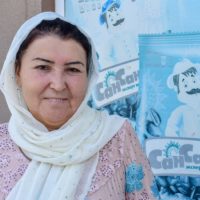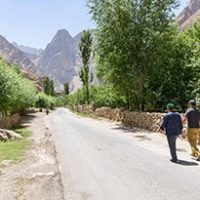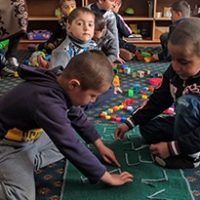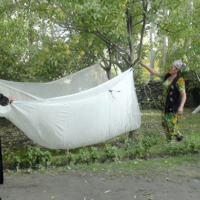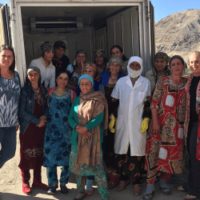What Is MIAD?
The Aga Khan Development Network’s integrated development approach, what we call Multi-Input Area Development (MIAD), builds thriving communities focused on sustainable improvements through complementary social, economic, and cultural interventions.
By connecting community-driven projects with public, private, and civil society partners, we offer a comprehensive, integrated approach, investing in the same place. This means widespread progress, from education to infrastructure.
MIAD as an Approach
The Aga Khan Development Network (AKDN) consists of a constellation of development agencies, both for- and not-for-profit, set up to bring the necessary resources and expertise to bear on a given area. Each agency is meant to interact with, and reinforce, the others.
According to the CEO of Aga Khan Rural Support Programme in India, Apoorva Oza:
Multi-input area development largely means that at the community level you have multiple inputs in the health, livelihood, and education sectors being made available. It arises from the fact that in very poor regions, the poverty that we know is multi-dimensional, so just addressing one input—whether it be education or income—is actually not enough. It doesn’t lead to a substantial difference in quality of life. If [for example] you have a child who’s educated, but their nutrition levels are very low, then that input is going nowhere.
The MIAD Approach in Action
In Tajikistan and Afghanistan, we built Global Development Alliances with the U.S. Agency for International Development. The Global Development Alliance (GDA) is a mechanism that seeks to effectively provide aid to developing countries through public-private partnerships. The GDA model combines the resources of the private sector with the technical expertise and experience of the U.S. government. GDAs leverage the combined resources of participating partners to drive economic growth, reduce poverty, address health and environmental issues, and expand access to education and technology. The alliances are co-created, co-managed, and co-funded so that the risks and responsibilities are shared equally among partners.
Both GDAs in Afghanistan (2013–2018) and Tajikistan (2014–2019) worked with local communities to connect social development programs to economic initiatives. See below for examples of these past projects.
Afghanistan: MIAD–GDA
Launched in 2013, the Multi-Input Area Development Global Development Alliance (MIAD–GDA) is a partnership between the Aga Khan Development Network and USAID to improve the quality of life in Afghanistan’s Badakhshan province by strengthening health, education, livelihoods, and governance. The project links the public and private sector to promote long-term social and economic development.
- MIAD–GDA Factsheet
Published by USAID, this one-page document provides an overview of the partnership, including activities and accomplishments. - FAQs
The FAQs include information on the MIAD GDA initiatives in Afghanistan and Tajikistan. - Implementation Guide
The document is meant to serve as a guide for donors and program implementers interested in designing similar blended finance partnerships, based on the lessons learned from these two AKDN USAID partnerships.
Tajikistan: ESCoMIAD–GDA
Launched in 2014, the Economic and Social Connections: Multi-Input Area Development (ESCoMIAD) for Tajikistan is a partnership between the Aga Khan Foundation USA and USAID that mobilizes public and private sector capital to catalyze enterprise-driven development programs in Tajikistan. Similar to MIAD–GDA in Afghanistan, the initiative harnesses the combined strengths of the AKDN in the country.
- ESCoMIAD–GDA Factsheet
For more on the project, read this short brief of the Economic and Social Connections: Multi-Input Area Development for Tajikistan. - ESCoMIAD Blog Series
See below to browse stories from the ESCoMIAD initiative in Tajikistan.

